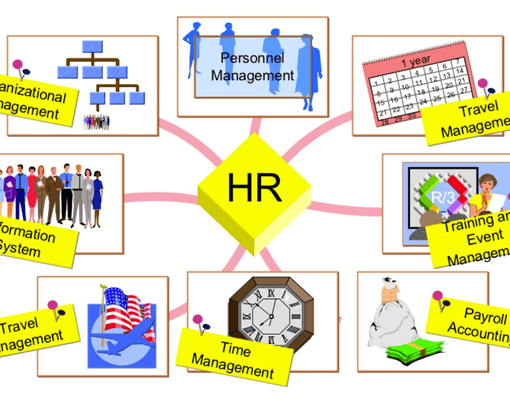1. Introduction
APIs (Application Programming Interfaces) act as bridges, enabling different software applications to communicate seamlessly. This article delves into the often-underappreciated hero of the API world—Documentation.
2. Understanding API Documentation
2.1 What is an API?
An API is a set of rules that allows one piece of software to interact with another. It defines the methods and data formats that applications can use to request and exchange information.
2.2 The Role of Documentation
It is the user manual for developers. It provides crucial insights into how to use an API, what endpoints are available, and the expected responses, facilitating a smooth integration process.
3. Importance of Well-Crafted API Documentation
3.1 Facilitating Integration
Clear documentation is the linchpin of successful integration. It acts as a guide, helping developers understand the API’s functionalities and implement them effectively.
3.2 Enhancing Developer Experience
Good documentation enhances the developer experience by reducing the learning curve. When developers can quickly grasp how to use an API, they’re more likely to embrace and advocate for it.
3.3 Supporting Maintenance and Updates
Well-documented APIs ease the burden of maintenance. When updates occur, developers can refer to the documentation to understand changes and modify their applications accordingly.
4. Key Elements of Effective API Documentation
4.1 Clear and Concise Descriptions
Documentation should articulate each endpoint’s purpose and expected inputs/outputs clearly and concisely. Avoiding unnecessary jargon ensures accessibility.
4.2 Code Samples and Examples
Real-world examples and code snippets demonstrate how to interact with the API. This hands-on approach accelerates the learning process.
4.3 Authentication and Authorization Guidelines
Clearly defining how developers can authenticate and authorize their requests is fundamental. Security measures should be outlined explicitly.
4.4 Endpoint Details and Usage
Thorough documentation should include detailed information about each endpoint, including its purpose, parameters, and potential responses.
5. Structuring API Documentation for User-Friendly Access
5.1 Introduction to the API
A well-crafted introduction provides an overview of the API’s purpose, key functionalities, and any prerequisites for usage.
5.2 Authentication and API Keys
Clear instructions on how to obtain and use authentication tokens or API keys are essential for a smooth onboarding process.
5.3 Endpoint Reference
A comprehensive endpoint reference organizes endpoints logically, making it easy for developers to find the information they need.
5.4 Code Samples and Tutorials
Incorporating practical code samples and tutorials guides developers through real-world scenarios, reinforcing their understanding.
6. Tools for API Documentation
6.1 Swagger/OpenAPI
Swagger and OpenAPI specifications provide a standardized way to describe RESTful APIs, enhancing consistency and interoperability.
6.2 API Blueprint
API Blueprint simplifies the documentation process using a Markdown-like syntax, making it accessible for developers and non-developers alike.
6.3 Postman Documentation
Postman offers tools for API development and testing, including features for generating documentation directly from API requests.
6.4 Custom Documentation Platforms
Some organizations opt for custom documentation platforms tailored to their specific needs and branding.
7. Common Challenges in API Documentation
7.1 Keeping Documentation Updated
APIs evolve, and so should their documentation. The challenge lies in maintaining accurate and up-to-date information.
7.2 Balancing Detail and Simplicity
Finding the sweet spot between providing detailed information and keeping it understandable for developers with varying skill levels is an ongoing challenge.
7.3 Addressing Diverse User Skill Levels
Effective documentation caters to both beginners and advanced users. Striking the right balance ensures inclusivity.
8. Best Practices for Writing API Documentation
8.1 Maintain Consistency
Consistency in language, formatting, and structure fosters a user-friendly experience.
8.2 Incorporate Interactive Elements
Interactive elements, such as live code snippets, enhance engagement and understanding.
8.3 Provide Real-World Use Cases
Illustrating API usage in practical scenarios helps developers conceptualize its applications.
8.4 Encourage Community Contributions
Allowing the developer community to contribute to documentation ensures a collective and comprehensive resource.
9. Real-world Examples of Exceptional API Documentation
9.1 Stripe API Documentation
Stripe’s documentation is praised for its clarity, extensive examples, and a user-friendly structure.
9.2 GitHub API Reference
GitHub’s documentation excels in providing detailed endpoint information and practical use cases.
10. Future Trends in API Documentation
10.1 AI-Enhanced Documentation
AI tools may play a role in automating documentation processes and providing intelligent suggestions for improvements.
10.2 Integration with Development Environments
Integrating documentation directly into development environments streamlines the workflow for developers.
11. Conclusion
In the collaborative dance of software development, API documentation takes the lead, ensuring harmony between diverse applications. A well-documented API is not just a technical manual; it’s a bridge that connects innovation seamlessly.
12. FAQs
12.1 Why is well-crafted API documentation important?
Well-crafted documentation is crucial for helping developers understand how to use an API effectively, facilitating smooth integration.
12.2 What key elements should API documentation include?
Key elements include clear descriptions, code samples, authentication guidelines, and comprehensive endpoint details.
12.3 How can developers structure API documentation for better accessibility?
Structuring documentation with a clear introduction, organized endpoint reference, and practical tutorials enhances accessibility.
12.4 What are the common challenges in maintaining API documentation?
Common challenges include keeping documentation updated, balancing detail and simplicity, and addressing diverse user skill levels.
12.5 How can AI impact the future of documentation?
AI may enhance documentation processes, providing automation and intelligent suggestions for improvement.
You may be interested in:
A Deep Dive into SAP API Management





